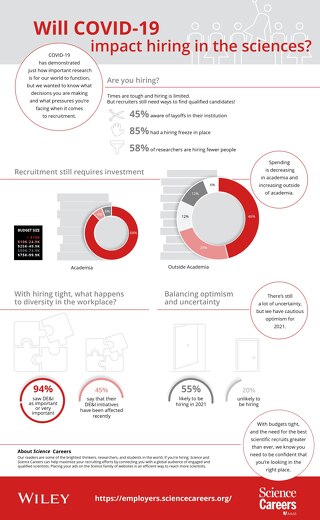how-to-make-authors-happy-reducing-peer-review-times
June 10, 2020
| Prof. Geoff Hughes, Editor-in-Chief of Emergency Medicine Australasia |
How can editors keep their authors happy by reducing peer review times? What impact is the COVID-19 pandemic having on editorial processes? Professor Geoff Hughes is Editor-in-Chief (EIC) of Emergency Medicine Australasia (EMA), the official journal of the Australasian College for Emergency Medicine and the Australasian Society for Emergency Medicine, and the leading journal in the specialty of emergency medicine in the Asia Pacific region. EMA has been published by Wiley for more than 20 years. We asked Geoff to share his perspective as an Editor-in-Chief on reducing peer review times.
What is your professional background, and how long have you been an Editor-in-Chief?
I am a medical doctor. As a postgraduate, I specialised in Emergency Medicine in the UK. In 1997 we emigrated to New Zealand. Since then our time has been split about 50/50 between NZ and Australia. I have worked primarily in university hospitals and have had Clinical Director roles in all three countries since 1990.
I have been an EIC for nearly fifteen years, starting with the Emergency Medicine Journal in the UK and more recently with Emergency Medicine Australasia. I was also a member of the editorial board of the British Medical Journal for a few years.
What are your priorities in serving your author community?
Being an EIC is a privilege; it's also fun. We have four relationships - with the journal owners, the publisher, the authors, and the readers. The readers are as important as the authors. The author community is primarily front-line clinicians; many are academics as well. They are busy people. Being an Emergency Physician myself, I know what it is like. My priorities are to provide an efficient and speedy system for them. Apart from providing a peer review service for their manuscripts, I also discuss ideas for future manuscripts, offer advice on medical statistics, and tips on how to improve the quality of their writing. I encourage colleagues to write perspective/opinion pieces on relevant topics of the day and I also encourage debate. I commission editorials when relevant.
Why is reducing turnaround times particularly important for your authors?
Authors are keen to get their work out into the public domain. They have something they want to share with their colleagues nationally and internationally. It is human nature to want this to happen speedily and efficiently.
What specific changes have you made to your editorial and peer review processes to help reduce turnaround times?
Our peer reviewers are busy people and they do this work voluntarily. We need to have a system that makes things as straight forward as possible by removing any blocks. Specific initiatives include:
- expanding the pool of reviewers we can call on, the aim being to make the workload less onerous. It’s also essential to introduce fresh faces into the pool. I have been particularly keen to bring in reviewers from the newer generation of qualified specialists;
- updating and expanding the Section Editor Guidelines (guidance on searching for reviewers, decision making, how to progress papers on a case-by-case basis);
- updating and expanding the Reviewer Guidelines (how to do a review, the importance of offering constructive criticism, how to use the software);
- increasing communications between the Section Editors and Ella Jones, our Editorial Assistant based in Wiley’s Content Review team in Melbourne. She has a crucially important link role;
- running a six-month pilot whereby the editorial office sends names of potential reviewers to the Section Editors after initial invitations were either declined or were unavailable. We want to see how successful and useful these suggestions are;
- and screening out many papers at initial submission without peer review. I reject approximately 50% at this stage. My target is to complete this screening process within 24 hours of receiving the manuscript in my inbox.
What challenges have you faced in trying to reduce turnaround times? How successful have you been?
For some time now, fewer reviewers are accepting invitations to review; this increases pressure on the Section Editors to find more suitable and available reviewers, remembering all this activity is unpaid and done voluntarily.
But although the review invitation acceptance rate is decreasing, it now takes less time to secure reviewers because Section Editors have been optimising Scholar One searches, utilising the Reviewer Locator tool integrated within ScholarOne and their own network of contacts. For the period 2018-2020 to date we have seen a 16% reduction in time from submission to first decision (this includes time taken to review) and a 19% reduction in time from submission to acceptance.
How has the COVID-19 pandemic affected your editorial and peer review processes?
We have seen a flurry of COVID-19 papers here from physicians in Australia and New Zealand. Supported by Wiley’s Content Review team who manage our editorial office, in particular Ella Jones, we have changed the publication process for these papers. Within 48-72 hours of acceptance, a manuscript is published online in a basic PDF format (not typeset or paginated, but with a DOI) as an ‘Accepted Article’. This is replaced by the final typeset version about two weeks later. We have also created a Virtual Issue for all COVID-19 accepted manuscripts. This is updated regularly and will be available indefinitely. All of these articles are free to access. It is crucial that we maintain our usual academic standards and so we have a ‘business as usual’ approach: the peer review process itself has not changed, except that I will ask a Section Editor if they can give the process priority.
Editor’s note:
As well as helping to ensure that COVID-19 articles undergo a rapid peer review and publication process, Wiley is helping to promote COVID-19 research in the following ways:
- sharing newly submitted research related to COVID-19 with the World Health Organization, subject to author consent;
- making all COVID-19 and coronavirus-related publications, and the available data supporting them, immediately accessible in PubMed Central (PMC) and licensing it in ways that facilitate reuse;
- creating a collection of journal articles and book chapters on coronavirus research freely available to the global scientific community, through a list that is continually updated at https://novel-coronavirus.onlinelibrary.wiley.com/;
- through the Scitrus platform created by our partner Atypon, aggregating current research on COVID-19 in real time across multiple publishers and outlets;
- and creating a page dedicated to COVID-19 research on the Authorea preprints platform.
Information on these and other COVID-19 related initiatives from Wiley can be found at https://www.wiley.com/network/researchers/covid-19-resources-for-the-research-community.











